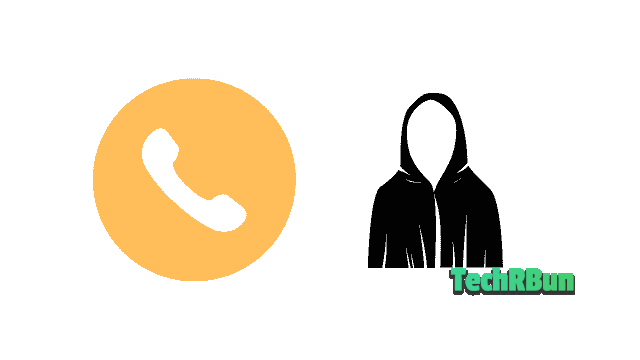Phone calls have become an essential part of our everyday lives, connecting us to friends, family, and businesses. However, with the rise of unknown and unidentified callers, understanding caller identification has become more important than ever. In this article, we will explore three common types of caller identification: private caller, unknown caller, and anonymous caller.
A private caller intentionally hides their number. An unknown caller’s number is unrecognized but visible. An anonymous caller hides both number and identity, leaving the recipient uncertain.
You may have encountered these terms before and wondered what sets them apart. Let’s clear up the confusion.
A private caller is when someone who intentionally hides their phone number from appearing on the recipient’s caller ID display.
An unknown caller, on the other hand, means the phone number isn’t recognized or saved in the recipient’s contacts, but the caller’s number is still visible.
Lastly, an anonymous caller is the most mysterious type, as they hide both their phone number and identity, leaving the recipient uncertain.
Understanding the differences between these caller identification types is crucial for a few reasons. First, it gives you the power to decide whether to answer or ignore calls based on your preferences and safety. Second, it helps you differentiate between genuine calls and potential scams or harassment attempts, protecting you from malicious activities.
By exploring each type in detail, we can arm ourselves with the knowledge needed to navigate the ever-changing landscape of phone communications.
This article will delve into private caller, unknown caller, and anonymous caller, providing insights into their characteristics, potential implications, and strategies for effectively dealing with them.
So, let’s unravel the mysteries behind these caller identification types and equip ourselves with the tools to take control of our phone conversations.
Table of Contents
Private Caller

Private caller is a term used to describe a situation where the person making the call intentionally withholds their phone number from appearing on the recipient’s caller ID display.
Instead of seeing the caller’s phone number, the recipient will typically see a message like “Private Number,” “Blocked,” or “Unknown.” This lack of caller identification can create a sense of mystery and uncertainty, leaving the recipient unsure about the caller’s identity or intentions.
There are several reasons why someone might choose to make a call as a private caller. One common motivation is to safeguard personal privacy.
In today’s digital age, where personal information is easily accessible, some individuals prefer to keep their phone numbers hidden from unknown parties. By making a call as a private caller, they can prevent their number from being easily obtained or misused.
Another reason for using private caller identification is to avoid unwanted calls or potential harassment. Unfortunately, unsolicited calls from telemarketers, scammers, or even acquaintances can be persistent and intrusive.
By withholding their phone number, individuals can make it more difficult for unwanted callers to reach them, providing a layer of defense against persistent or nuisance calls.
In professional scenarios, private caller identification can be advantageous for individuals in sales or business-related roles.
When reaching out to potential clients or business partners, some professionals may choose to make their calls private to maintain a level of confidentiality until a connection is established.
This approach allows them to control the release of their contact information and ensures that initial conversations are conducted on their own terms.
While there may be valid reasons for using private caller identification, receiving calls from private callers can also raise concerns and potential risks.
The lack of caller identification leaves recipients uncertain about the caller’s identity, making it challenging to gauge the legitimacy of the call.
This uncertainty can be especially concerning when it comes to potential scams or fraudulent activities, as scammers often use private caller identification to mask their true intentions and deceive unsuspecting individuals.
To effectively handle calls from private callers, there are a few practical tips that can be employed. First, consider screening calls by letting them go to voicemail or using an answering machine. This allows you to listen to the caller’s message before deciding whether to return the call. If the call is genuine, the caller will likely leave a message that provides clarity about their identity and purpose.
Another approach is to utilize call-blocking features available on many smartphones or through service providers. These features enable you to block calls from private numbers or specific callers, providing an added layer of protection against unwanted or potentially harmful communications.
Additionally, it can be helpful to maintain a healthy level of skepticism when dealing with calls from private callers. Be cautious about sharing personal information and avoid engaging in suspicious or unsolicited requests.
In conclusion, private caller identification serves as a method for individuals to withhold their phone numbers from appearing on the recipient’s caller ID.
It can be motivated by personal privacy concerns or the need to manage unwanted calls. However, it’s essential to remain vigilant when receiving calls from private callers due to potential risks.
By employing strategies such as call screening and utilizing call-blocking features, individuals can effectively handle calls from private callers while maintaining their privacy and security.
Unknown Caller

An unknown caller is a term used to describe a situation where the recipient of a phone call does not recognize or have the caller’s phone number saved in their contacts.
Unlike a private caller, the phone number of an unknown caller is visible on the recipient’s caller ID display. However, due to the lack of familiarity, the recipient is unable to associate the number with a specific individual or organization.
There are various reasons why a caller might appear as an unknown caller on caller ID. One common reason is technical limitations within the network or phone system.
This can occur when the caller’s network or service provider does not transmit caller identification information correctly, resulting in the recipient’s caller ID display showing the call as an unknown caller.
It’s important to note that these technical issues are typically beyond the control of both the caller and the recipient.
In some cases, legitimate calls may also appear as unknown callers. For instance, emergency services such as police, fire departments, or hospitals often have their numbers configured to appear as unknown callers to protect their privacy and prevent potential abuse.
Additionally, certain businesses or organizations that prioritize privacy, such as doctors’ offices or government agencies, may also appear as unknown callers when contacting individuals.
Receiving calls from unknown callers can have both benefits and drawbacks. On the positive side, it allows for the possibility of unexpected connections or important messages from individuals or organizations that are not in the recipient’s contact list. It provides an opportunity to receive valuable information, updates, or even pleasant surprises.
However, there are also potential drawbacks to consider. The lack of caller identification introduces an element of uncertainty, as the recipient cannot immediately discern the caller’s identity or intentions.
This uncertainty can create skepticism or caution, especially when it comes to potential scams or fraudulent calls. Scammers often exploit the unknown caller status to manipulate unsuspecting individuals or trick them into revealing sensitive information.
To handle calls from unknown callers safely and responsibly, there are several guidelines to follow. First and foremost, exercise caution and remain vigilant.
Avoid sharing personal information or engaging in any financial transactions during the call unless you can confidently verify the caller’s identity.
If the call seems suspicious or too good to be true, it’s best to err on the side of caution and end the conversation.
To verify the caller’s identity, consider asking questions that only someone with legitimate intentions or prior knowledge would be able to answer.
For example, inquire about specific account details or recent interactions with the organization they claim to represent. If the caller is genuine, they should be able to provide satisfactory responses that establish their credibility.
If you have doubts about the legitimacy of the call, it’s advisable to independently research the phone number or organization. Look up their official contact information and reach out through a trusted channel, such as their verified website or customer support line, to confirm the authenticity of the call. This extra step can help safeguard against potential scams or deceptive practices.
Furthermore, you can utilize caller identification apps like Truecaller and their smart blocking feature to help filter out unwanted or suspicious calls, including those from unknown callers. Truecaller and similar apps use a vast database of phone numbers to identify and label incoming calls, providing information about the caller’s identity and potential spam or fraud risks. By leveraging such apps, individuals can gain additional insights into unknown callers and make more informed decisions about answering or blocking the calls.
Lastly, consider utilizing call-blocking features or apps that can help filter out unwanted or suspicious calls, including those from unknown callers. These tools provide an additional layer of protection and can significantly reduce the frequency of unsolicited or potentially harmful communications.
In conclusion, unknown callers are individuals or organizations whose phone numbers are not recognized or saved in the recipient’s contacts.
Unlike private callers, their phone numbers are visible on the caller ID display. While there may be legitimate reasons for calls to appear as unknown callers, it is crucial to approach them with caution.
By following safe practices such as verifying the caller’s identity, conducting independent research, and using call-blocking features, individuals can mitigate the risks associated with unknown callers and maintain their personal safety and security.
Anonymous Caller

An anonymous caller refers to a situation where the caller deliberately conceals both their phone number and identity from the recipient.
Unlike private or unknown callers, who may have valid or technical reasons for withholding information, anonymous callers intentionally mask their identity and make it difficult for the recipient to identify them through traditional means.
Encounters with anonymous callers can happen in various scenarios. Unfortunately, some anonymous calls are made with the intent to harass, intimidate, or engage in malicious activities.
These instances can include prank calls, verbal abuse, or even threats. The anonymity provided by withholding the caller’s identity allows them to act with impunity, making it challenging for recipients to hold them accountable or take appropriate action.
However, it is important to recognize that not all anonymous calls have negative intentions. Some individuals may choose to hide their identity due to legitimate reasons, such as whistleblowing or reporting sensitive information. In such cases, maintaining anonymity protects the caller from potential repercussions or retaliation. Whistleblowers, for example, may fear retribution from powerful individuals or organizations, and therefore, choose to withhold their identity when sharing crucial information.
The motivations behind anonymous calls can vary widely. While some individuals may seek to cause harm or disrupt others’ lives, others may have genuine concerns or a desire to protect themselves.
It is crucial to approach anonymous calls with caution and carefully assess the situation to determine the caller’s intentions.
In situations involving anonymous calls, legal considerations come into play, particularly when they involve harassment, stalking, or threats.
Laws and regulations differ across jurisdictions, but many countries have strict laws against harassment or stalking, which encompass anonymous calls.
If you receive repeated anonymous calls that are harassing or threatening in nature, it is advisable to consult local laws and consider reporting the incidents to the appropriate authorities.
When dealing with anonymous calls, it is important to prioritize personal safety and take necessary precautions. Here are some practical tips to consider:
- Document the calls: Keep a record of the date, time, and nature of each anonymous call you receive. This documentation can be useful if you need to report the calls or provide evidence in the future.
- Don’t engage: Refrain from engaging in conversations with anonymous callers, especially if they are harassing or threatening. Responding or retaliating may encourage further unwanted contact.
- Report the calls: If you feel threatened or harassed, report the anonymous calls to your local law enforcement agency. They can guide you on the appropriate steps to take based on the laws in your jurisdiction.
- Call-tracing services: In some cases, you may be able to employ call-tracing services provided by your phone service provider or utilize call-tracing apps. These services can help identify the source of the anonymous calls, assisting in potential investigations.
- Utilize call-blocking features: Consider using call-blocking features available on your phone or through third-party apps. These features can help filter out anonymous calls and prevent them from reaching you in the first place.
- Seek support: Reach out to trusted friends, family members, or support organizations if you are feeling overwhelmed or anxious due to anonymous calls. They can provide emotional support and guidance during difficult times.
In conclusion, anonymous callers deliberately hide both their phone number and identity from the recipient. While some anonymous calls may involve harassment or malicious intent, others may stem from legitimate reasons such as whistleblowing.
It is important to prioritize personal safety, document the calls, and report any concerning or threatening anonymous calls to the appropriate authorities.
By following practical tips and seeking support, individuals can navigate the challenges posed by anonymous calls and maintain their well-being.
Conclusion
In summary, distinguishing between private callers, unknown callers, and anonymous callers is vital for our personal safety and privacy in an increasingly interconnected world. Caller identification plays a significant role in protecting us from scams, harassment, and malicious activities.
Understanding the differences between these caller types enables us to make informed decisions about answering or ignoring calls, safeguarding our personal information. It is crucial to remain vigilant and proactively employ measures like call screening, call-blocking features, and verifying the identity of unknown or suspicious callers.
Technology advancements and regulatory measures are continuously enhancing caller identification accuracy and reducing fraudulent calls. Service providers are implementing sophisticated systems to detect and prevent scam calls, bolstering the overall security of phone communications.
As responsible phone users, we have a role to play in combating phone-related crimes. Reporting suspicious or harassing calls to the appropriate authorities is essential. By staying informed about emerging trends in caller identification and adopting best practices, we can adapt to evolving challenges and protect ourselves more effectively.
In conclusion, by understanding and distinguishing private callers, unknown callers, and anonymous callers, we can make informed decisions to protect our personal safety and privacy. Through vigilance, proactive measures, and embracing technology advancements, we can mitigate the risks associated with unwanted or suspicious calls. Let us take an active stance in reporting suspicious activity and staying informed, ensuring a safer and more secure phone communication environment for everyone.







